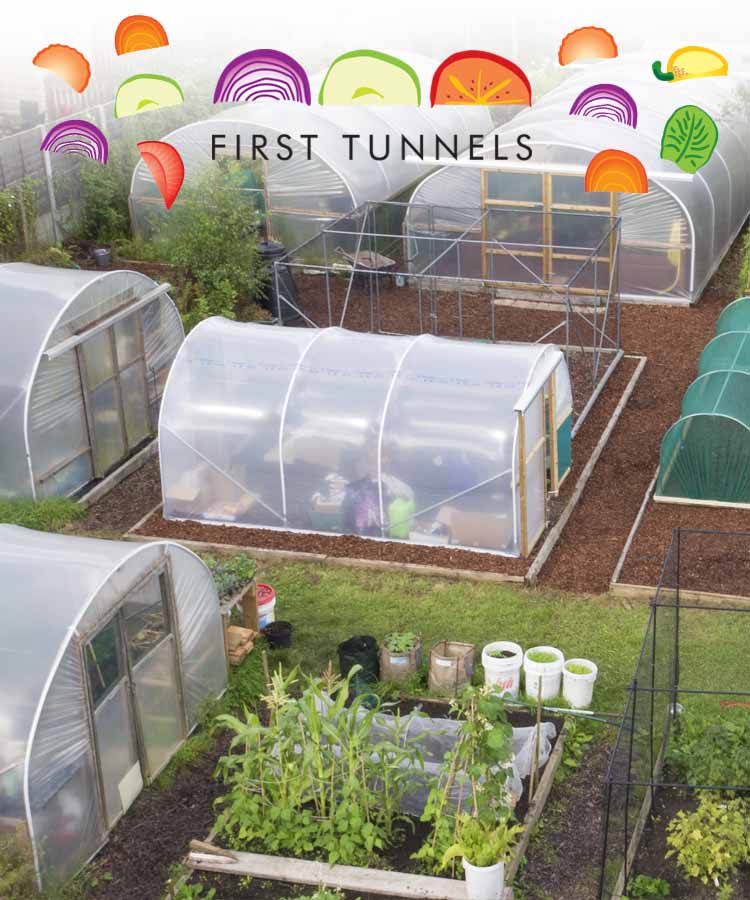Most beginners to polytunnel growing will choose to grow annual crops in their polytunnel. But there is another option. Perennial crops can be grown which will provide a yield for less effort, year after year. Perennial vegetables, fruit bushes and other plants can be grown in polycultures – mixed planting schemes – of useful plants. As long as you are sure to take care of the soil in your polytunnel, and feed it and the plants, they will create a sustainable growing system that requires far less effort and time than a traditional vegetable garden, with annual vegetables grown in rows.
Even in the smallest polytunnel, a dwarf fruit tree can be placed to make the most of the vertical space inside. As long as the tree is pruned to keep it within bounds, it can form the centrepiece of a perennial polytunnel, providing a high yield once it is established.
Fruiting canes, such as raspberries, can be trained to fit into the smallest of spaces, and fruiting bushes can also be kept at a manageable size. All sorts of soft fruits can be considered, some of which will do well in partial shade beneath a larger shrub or dwarf fruit tree.
Shrubs in a perennial polytunnel may also be placed with the express purpose of feeding other plants and maintaining good soil health. You might have some nitrogen fixing shrubs, which will take nitrogen from the air and transfer it to the soil, where it can be taken up by other nearby plants. Leaves from nitrogen fixers can also be used as mulch, to return fertility to the soil and keep in moisture.
Lower layers in the polytunnel, beneath the fruiting trees and shrubs, can be filled with herbaceous perennials. Options include a wide range of beneficial herbs, as well as perennial green vegetables, perennial type onions and strawberries.
Mulches beneath plants will help to ensure their continued good health. All sorts of biomass from your polytunnel and garden can be used. Leaf mould, compost, grass clippings... all these and more can help make sure that you have created a sustainable system.
Once you have created the lush and diverse ecosystem of a permaculture polytunnel, it should be fairly easy to maintain and you will find that most of your time as a gardener is spend harvesting the fruits of your initial labours and enjoying the bounty you are able to produce.
